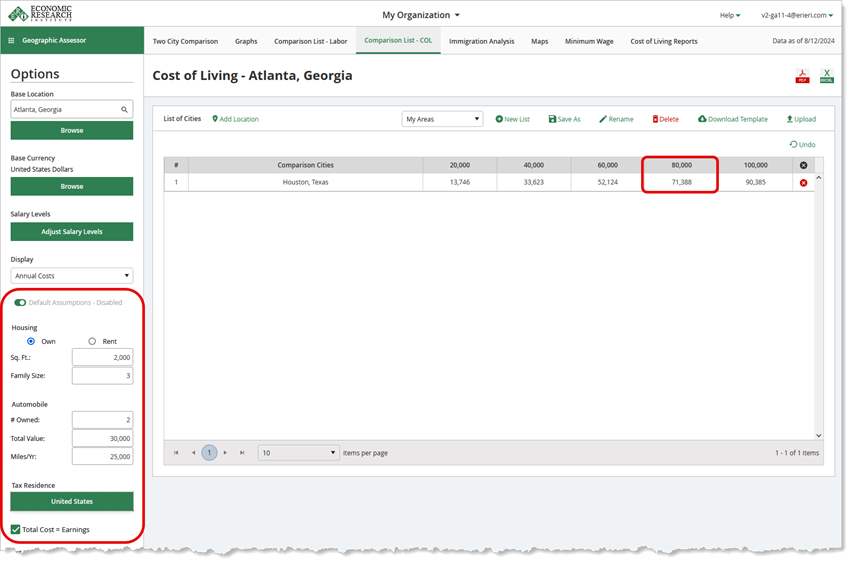QUESTION: How is the Cost of Living List the Geographic Assessor different from the COL Table by Earnings in the Relocation Assessor?
The COL estimated differentials provided in the basic version of the Geographic Assessor Cost of Living List are based on the Local Expenditure Pattern, which is the default expenditure pattern used in the Relocation Assessor. As a result, COL estimated differentials in the basic version of the Geographic Assessor will always match those provided in the Relocation Assessor using the default assumptions (Local Expenditure Pattern and home rental).
Geographic Assessor (basic version) - Cost of Living List:
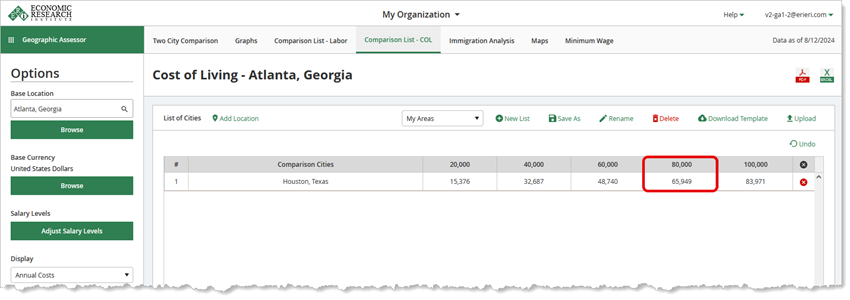
Relocation Assessor - COL Table by Earnings (using local expenditure pattern and home rental):
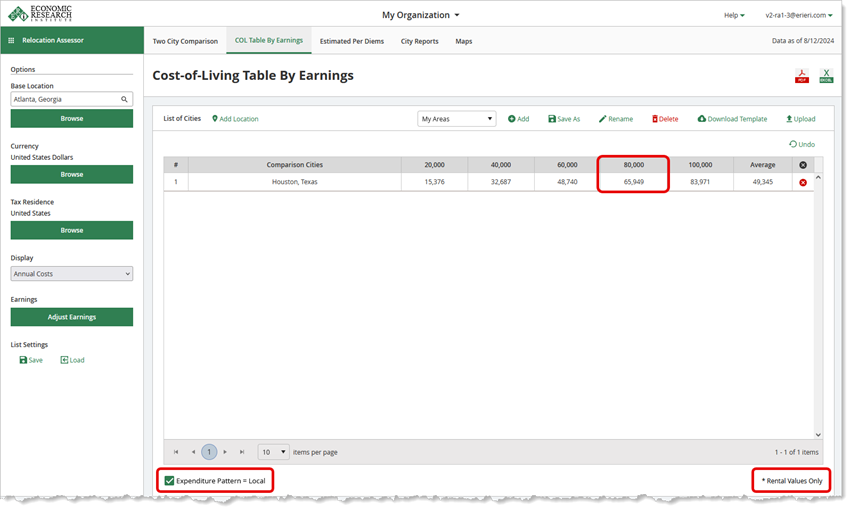
Relocation Assessor - Two City Comparison (using local expenditure pattern and default assumptions):
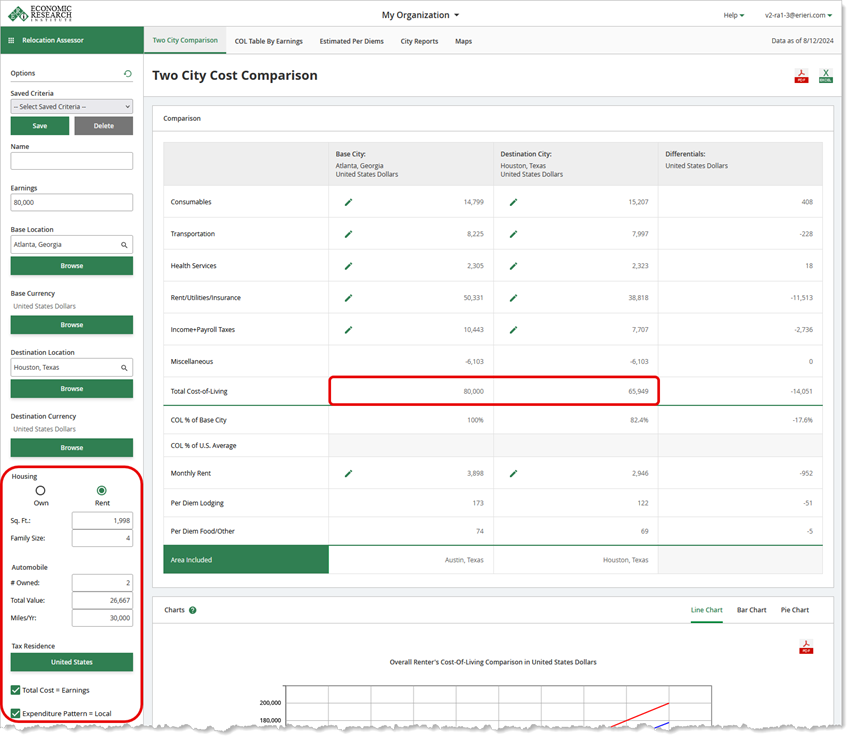
The COL Table by Earnings in the Relocation Assessor provides COL differentials based on either a Local or National Expenditure Pattern, depending on the user selection. The Cost of Living List in the enhanced Geographic Assessor always assumes the Local Expenditure Pattern.
Prior to the April 2016 data release, the Relocation Assessor used 2,200 square feet (the National Expenditure Pattern) as the default home size for all Base locations. Recent refinements to Local Expenditure datasets allow each Base location to have an individualized benchmark housing size to better reflect local housing costs. In the Two City Cost Comparison table and the COL Table by Earnings, users can toggle between the Local and National Expenditure Pattern by checking or unchecking the box next to Expenditure Pattern = Local (below the table). While the Two City Cost Comparison allows the user to customize assumptions (e.g., housing, automobile values, etc.), COL Table by Earnings uses default assumptions (home rental values only).
Prior to the January 2020 data release, the Geographic Assessor also used the National Expenditure Pattern. The updated Two City Comparison and Cost of Living List in the enhanced Geographic Assessor now allow users to customize assumptions (e.g., housing, automobile values, etc.). As a result, COL differentials in the Cost of Living List in the enhanced Geographic Assessor will only match those displayed in the COL Table by Earnings in the Relocation Assessor if default assumptions are used (rental only). If the default assumptions are disabled and customized assumptions (such as home ownership) are selected in the Cost of Living List in the enhanced Geographic Assessor, then COL differentials may not match those displayed in the COL Table by Earnings in the Relocation Assessor. (Please contact ERI to upgrade to the enhanced Geographic Assessor.) The Geographic Assessor's updated Two City Cost Comparison and Cost of Living List always assume the Local Expenditure Pattern.
For more information, see RA Data Background FAQ #15 or GA Data Background FAQ #20.
Geographic Assessor (enhanced version) - Cost of Living List (using local expenditure pattern and default assumptions):
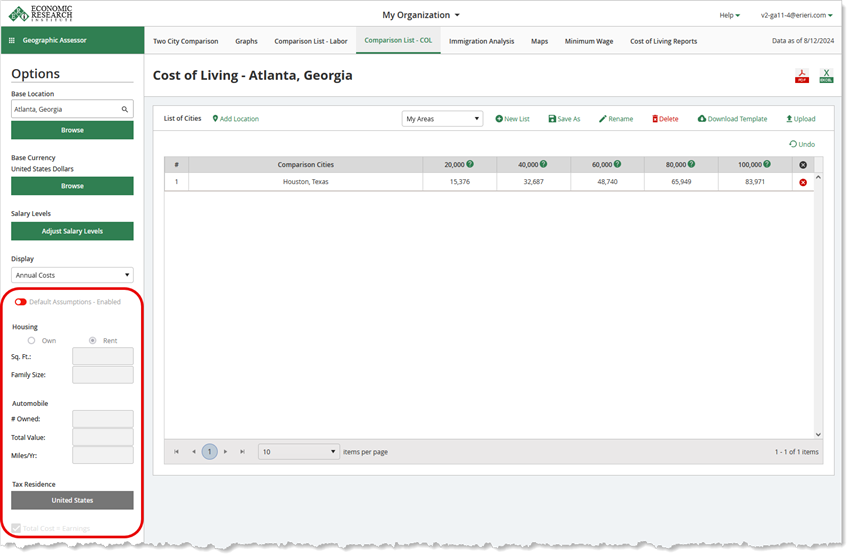
Geographic Assessor (enhanced version) - Cost of Living List (using local expenditure pattern and customized assumptions):
